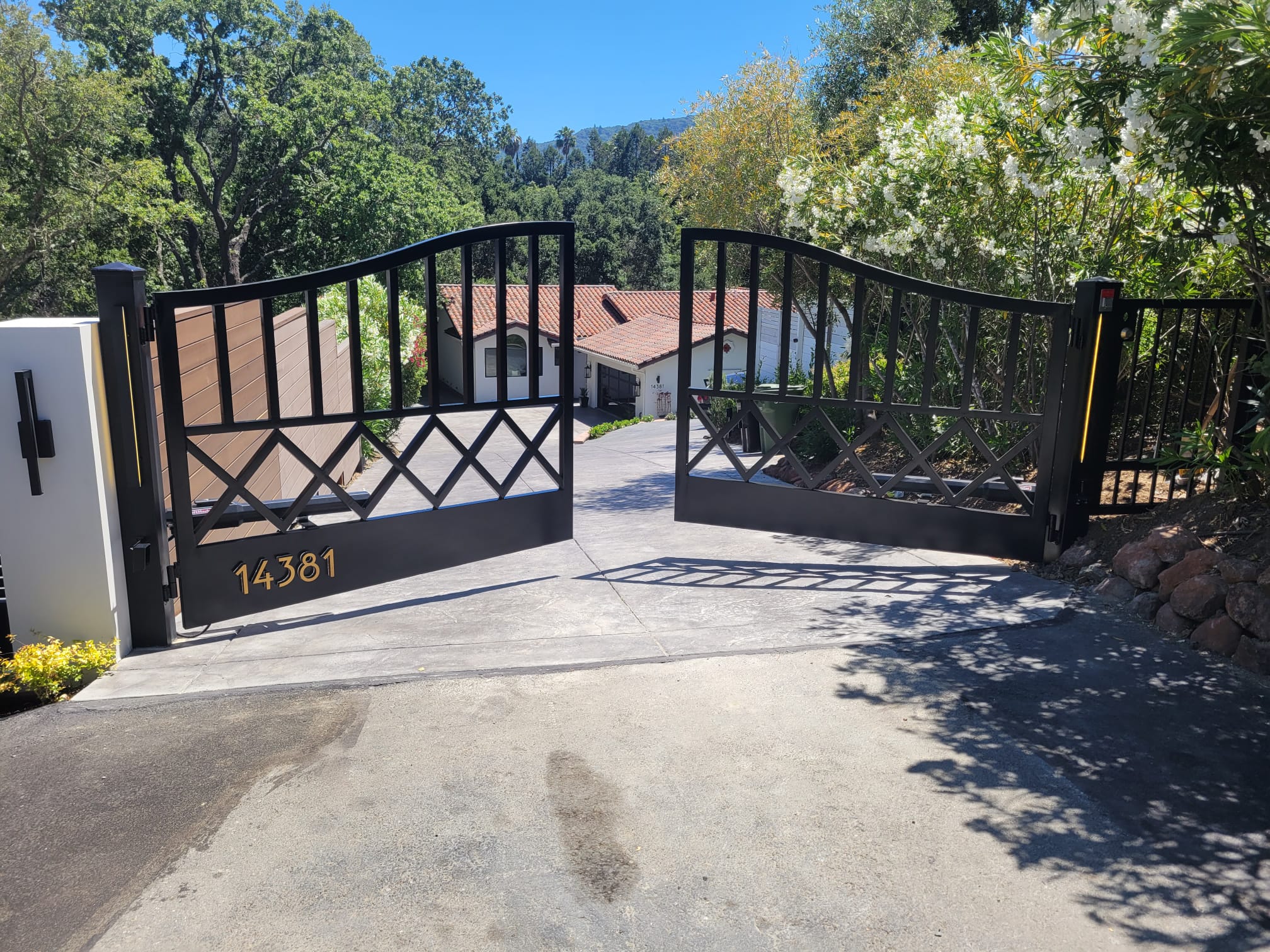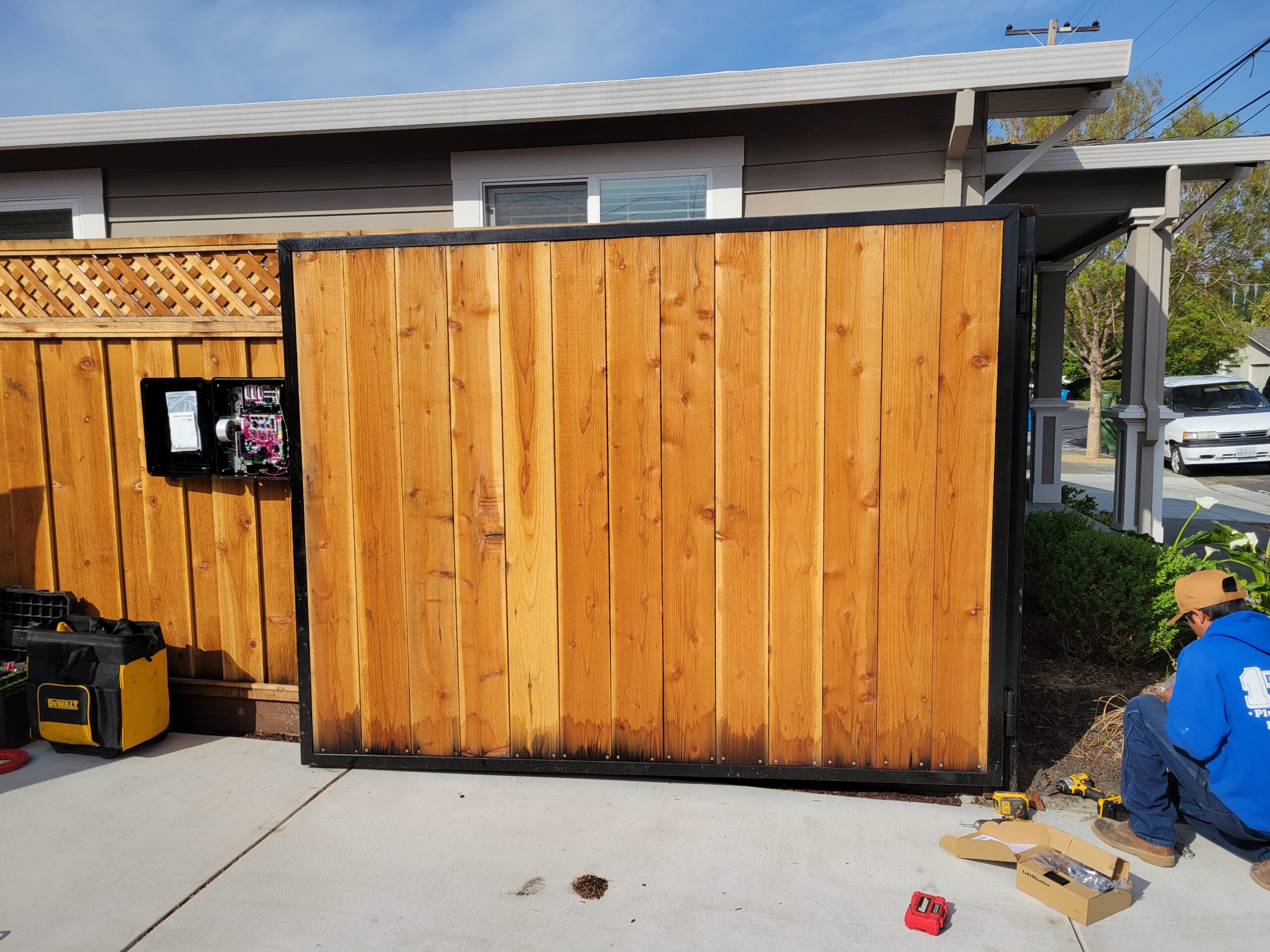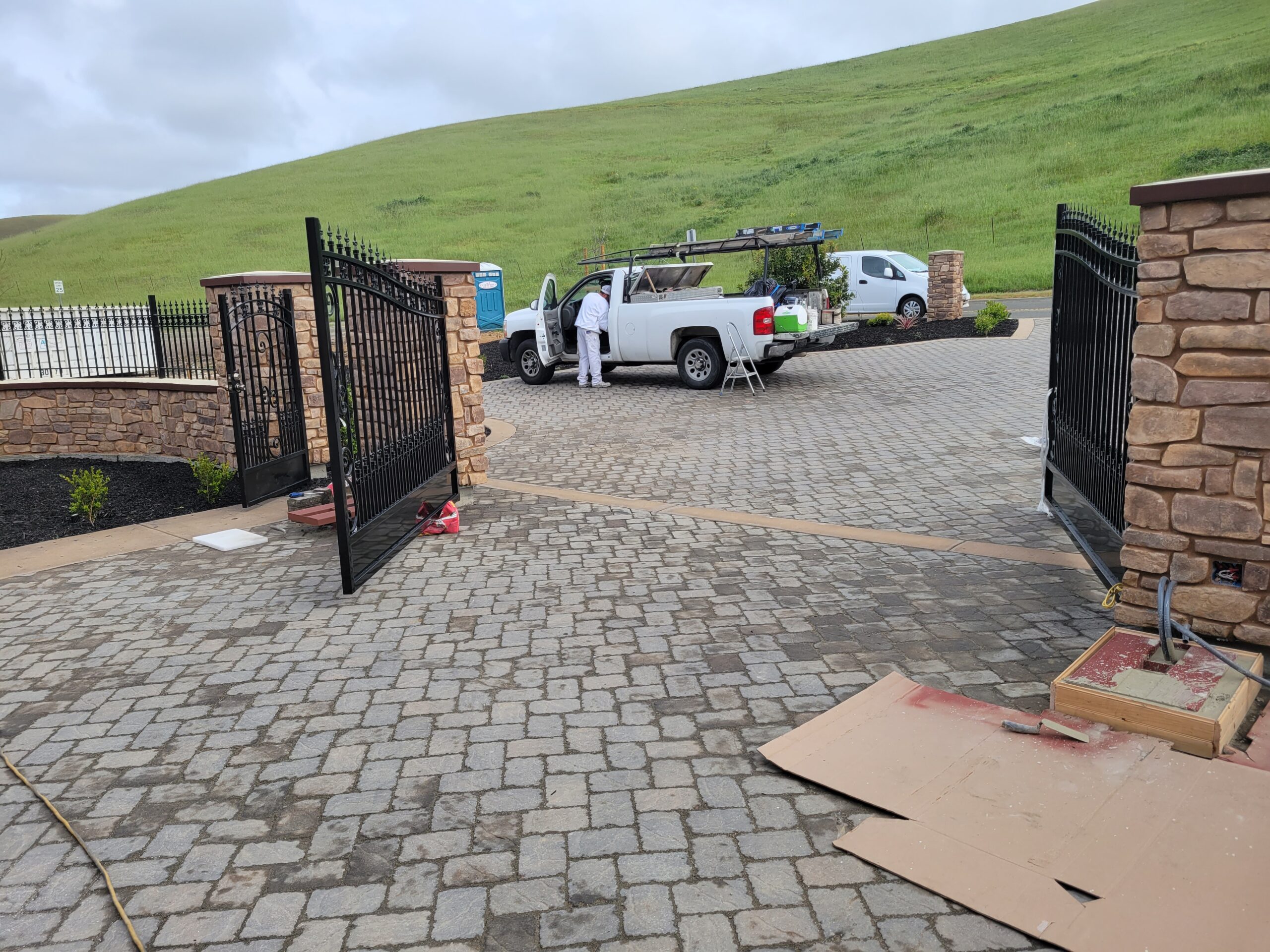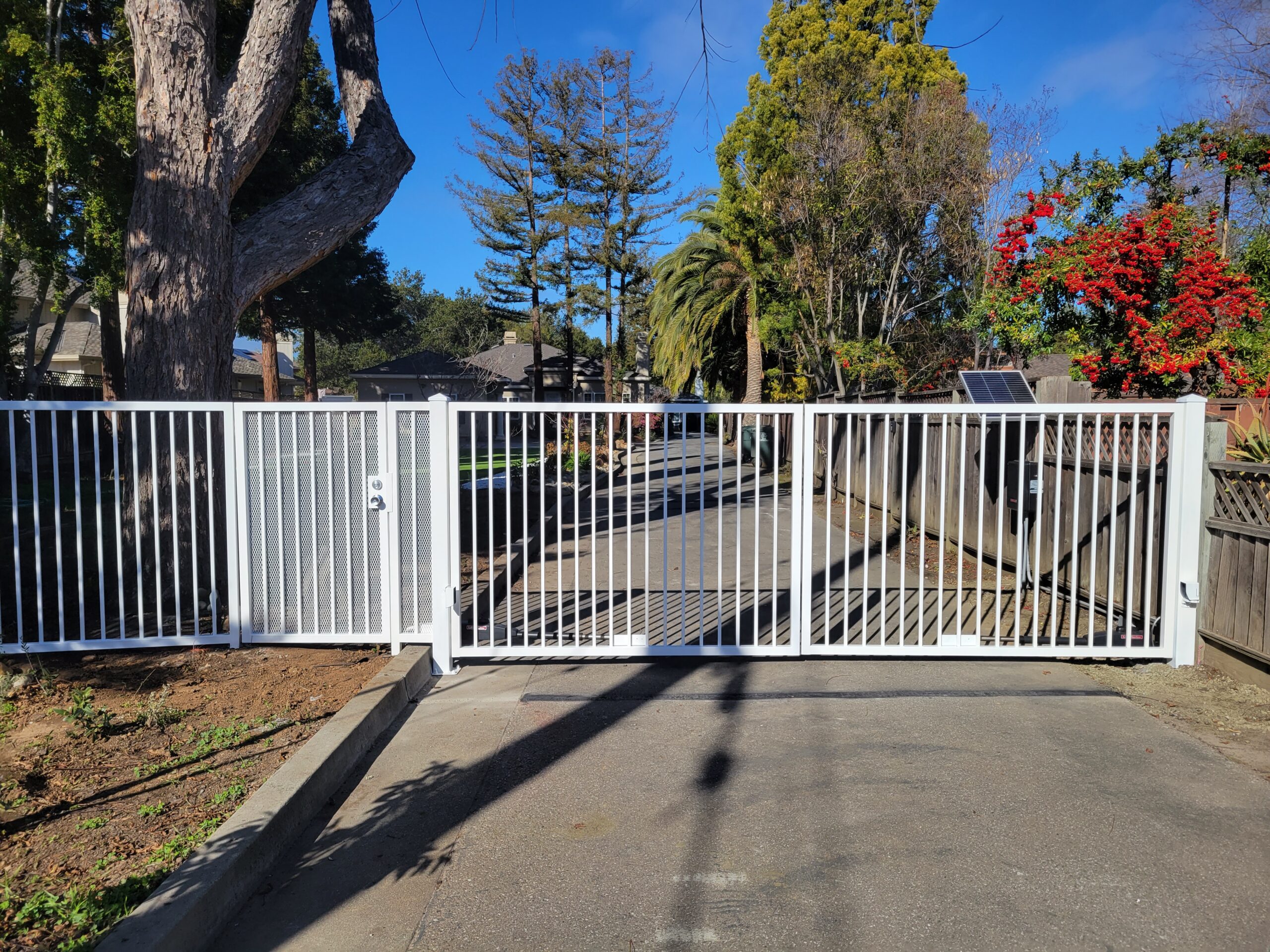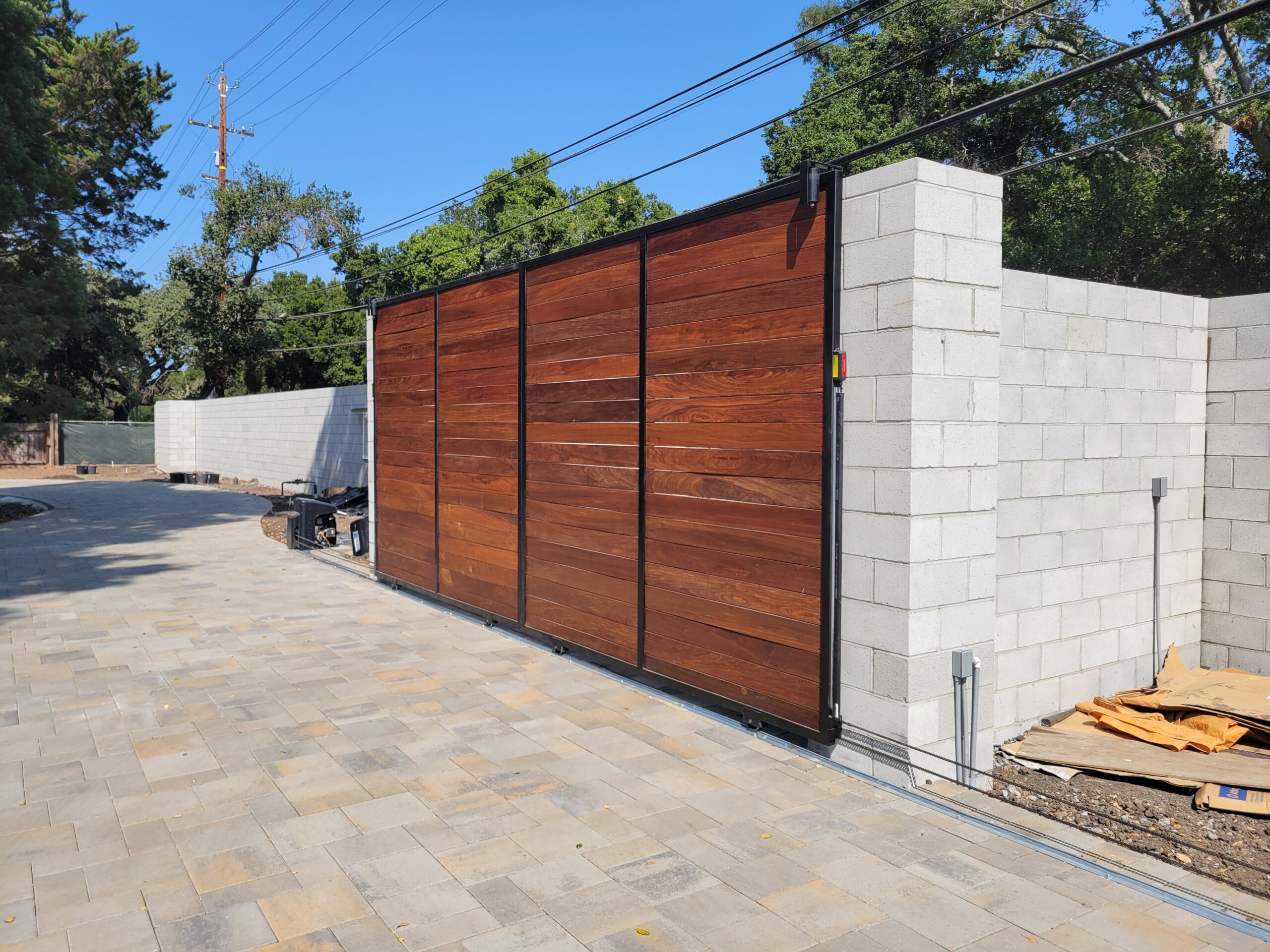Blog & News
Rainy Season Repairs: Waterproofing a Gate Opener in the Los Gatos Foothills

jay jay
Oct 30, 2025
Article, Uncategorized
When the skies open up over the Santa Cruz Mountains, Los Gatos homeowners know it’s time to check drains, seal windows, and protect their gates. If your automatic gate sits near a hillside or at the end of a steep driveway, moisture is its greatest enemy.
Before we dive in, if you’re currently dealing with a malfunctioning system or looking for Gate Repair Los Gatos, RNA Automatic Gates is your reliable local partner for installation, troubleshooting, and maintenance.
When the Rain Arrives, Gates Suffer First
The Los Gatos foothills experience a unique microclimate with conditions that can shift quickly from dry and sunny to misty and wet. These constant changes take a toll on outdoor electrical equipment, particularly automatic gate systems.
Metal gate components expand and contract with every temperature swing, while electrical parts inside openers face condensation, oxidation, and corrosion. Gates positioned on slopes or near retaining walls are especially vulnerable because runoff water tends to pool around gate posts and control boxes, seeping into wiring channels.
In this context, understanding how moisture intrusion begins is crucial to preventing long-term damage and maintaining smooth performance throughout the rainy season.

The Hidden Pathways of Water Infiltration
Most gate systems don’t fail instantly. Water finds its way inside gradually through small, almost invisible openings.
Conduit lines that are designed to protect wiring underground can easily become hidden pipelines for water if the ends are not properly sealed. Even the smallest crack in a gasket or gap in a control box cover allows humidity to enter, condense, and corrode vital electrical contacts.
Once gate motor moisture begins to affect the internal electronics, the damage multiplies. Each rainfall introduces new condensation, further degrading the board and connections until the system stops working altogether.
The Real Story: A Gate That Died After Three Straight Rainy Nights
Consider this example. A wrought-iron gate in the Los Gatos foothills had worked perfectly for years. After three consecutive nights of heavy rain, the homeowner found the gate frozen halfway open.
When technicians from RNA Automatic Gates arrived, they discovered that the control box was filled with condensation. Moisture had traveled through the lower conduit opening and shorted out the main circuit board.
This case prompted us to overhaul our waterproofing procedures. We now install elevated control boxes, create drip loops on every cable, and apply industrial-grade silicone sealant around every connection point. These steps go well beyond standard manufacturer recommendations.
It is a testament to how real-world weather in Los Gatos pushes gate systems far beyond what manufacturers typically test in controlled environments.
Looking for Affordable Garage & Gate Repairs?
We offer quality service at competitive rates. Call (650) 912-1200 today to schedule your repair.
Why Standard Gate Boxes Aren’t Truly “Weatherproof”
Many gate opener manufacturers promote their products as “weatherproof,” but it’s important to note that this label often refers only to protection from light rain or brief exposure. Continuous rainfall, fog, and heavy condensation in the Los Gatos foothills can easily exceed those limits.
Even IP-rated boxes can fail if installed in the wrong position or mounted on uneven terrain. Water does not need a large opening; given time, it will always find its way inside. Proper installation and ongoing maintenance are just as important as the rating itself.
Silicone, Seals, and Smart Placement
Waterproofing is not a one-time task but an ongoing strategy. A few practical improvements can significantly increase the lifespan of your weatherproof gate system and reduce the likelihood of failure during wet months.
- High-quality silicone seals: Applying professional-grade silicone around all wire entry points and box seams helps maintain a continuous moisture barrier. This prevents both rainwater and humidity from entering delicate areas over time.
- Raised mounting platforms: Installing control boxes several inches above ground level prevents them from sitting in puddles or absorbing runoff. This small height difference keeps electrical components safe during the heaviest storms.
- Breather vents with filters: Adding vents that allow air to circulate while blocking water buildup helps prevent internal condensation, especially in fluctuating temperatures.
- Thoughtful placement: Locating control boxes away from sprinkler zones, roof edges, and drainage paths prevents unnecessary exposure to excess water.
These small yet strategic steps ensure your waterproof gate opener remains effective even under prolonged exposure to moisture.

Cable Entry Mistakes That Let Water Win
Improper cable entry is one of the most common reasons gate systems fail during or after rainstorms. Cables should always enter the control box from below in a curved loop, not from the top or side. Without this drip loop, water can run directly along the cable jacket into sensitive electrical areas.
Another frequent issue involves conduit fittings that are overtightened or cracked. This mistake damages the seals, allowing water to seep into the conduit system. It is vital to check that each connection is tight but flexible, preserving the integrity of the seal without over-compressing it.
In summary, the difference between a gate that survives winter and one that fails mid-season often comes down to a single improperly sealed cable.
Testing for Hidden Moisture Damage
Even if your gate operates normally, moisture may still be causing internal corrosion or short circuits. Testing for hidden damage before the rainy season can help you prevent unexpected breakdowns.
Homeowners can perform simple checks:
- Inspect the control box: Open the housing and look for fogged covers, rust stains, or discolored terminals. These are early signs of moisture exposure.
- Smell for electrical odors: A faint burnt or ozone-like scent often indicates short circuits or failing insulation caused by damp conditions.
- Operate the gate manually: If movement feels uneven, the hinges or arms might have internal rust or water buildup that needs immediate attention.
If you detect any of these symptoms, it’s wise to call a professional for a rainy season gate fix before the damage spreads to the motor or circuit board.
The Role of Drip Loops and Drain Holes
Gravity plays a major role in waterproofing success. A drip loop – a simple downward bend in a cable before it enters a box – prevents rainwater from following the cable into the electrical housing.
Drain holes serve a similar function by allowing condensation to escape naturally instead of collecting inside. It’s interesting to note that many factory control boxes do not include drain holes by default, so technicians must often create them during installation.
In essence, combining these two simple design features harnesses gravity to protect your system rather than allowing it to work against you.

Retrofitting Older Gates for Weather Protection
If your gate system has been operating for more than a decade, it may not meet modern waterproofing standards. Fortunately, upgrading an older gate is straightforward with professional help. At RNA Automatic Gates, we specialize in bringing older gates up to current moisture protection levels without requiring full system replacements.
Retrofitting for gate wiring protection means fixing weak spots and replacing old or damaged materials to keep everything working safely and smoothly.
- Seal and fitting replacement: Old or cracked seals often become invisible leak points. Installing new high-grade rubber gaskets and watertight fittings closes those gaps effectively.
- Elevated control boxes: Mounting the control box higher on the post or wall protects it from puddles, standing water, and soil moisture.
- Surge and short protection: Adding low-voltage surge suppressors helps shield sensitive boards from electrical fluctuations caused by water infiltration.
- Upgraded enclosures: Strong, weatherproof boxes made from rust-resistant materials protect wiring better, especially in wet or foggy areas.
These improvements bring older systems in line with modern standards, ensuring longevity and reliability during even the wettest winters.
The Cost of Neglect: What Moisture Does Over Time
Neglecting water protection leads to slow but inevitable damage. Moisture corrosion develops in stages and can go unnoticed until a major failure occurs.
Firstly, humidity attacks metal connectors and relays, creating thin layers of oxidation that interfere with electrical conductivity. Secondly, short circuits begin forming on the control board, causing inconsistent behavior such as flickering sensors or delayed operation. Lastly, as corrosion reaches the motor windings, the system can experience a full electrical failure.
Repair costs increase significantly at each stage. Preventive automatic gate maintenance helps avoid costly replacements and protects your investment by addressing small issues early.
Keeping Gate Opener Boards Dry Year-Round
At RNA Automatic Gates, we pride ourselves on implementing proactive protection techniques that have been proven effective in the Los Gatos climate. Our approach focuses on prevention rather than repeated repair.
Here are several measures we recommend for year-round reliability:
- Dielectric grease on connectors: Applying a thin layer of this non-conductive compound prevents corrosion and ensures long-term electrical contact stability.
- Sealed cable glands: Using waterproof cable glands on every wiring entry point ensures that water cannot follow wires into control housings.
- UV-resistant protective covers: For gates that get a lot of sun, these covers stop cracking and help the box last longer.
- Seasonal maintenance visits: Scheduling inspections each fall allows technicians to address potential issues before storms begin. These visits typically include seal testing, hinge lubrication, and moisture detection inside control housings.
These simple steps keep your gate system strong all year. Regular care not only helps it work well but also keeps it in good shape for years to come.
The Los Gatos Approach: Smart Design Meets Smart Protection
The terrain of the Los Gatos foothills requires more than standard waterproofing. Local gates must withstand fog, steep runoff, and frequent mist. That’s why RNA Automatic Gates customizes each waterproof control box design according to elevation, orientation, and drainage patterns.
A gate near Shannon Road, for example, may require deeper conduit protection to prevent water pressure buildup, while a gate on Kennedy Road may need extra venting to release fog moisture. Our technicians analyze each site to create a balance between gate repair, functionality, and environmental protection.
In this context, local experience makes all the difference. What works in flat neighborhoods near San Jose may fail quickly in hillside conditions. That’s why our Los Gatos-based team develops systems that anticipate weather extremes rather than merely react to them.
Frequently Asked Questions (FAQ)
How can I tell if my gate opener is waterproof?
Look for an IP rating on the control box or motor cover. But remember, that number only shows how it performed in a lab test. A professional can check if it’s truly safe for the real Los Gatos weather.
What is the best way to waterproof a gate opener?
You need to seal wire openings with silicone, make drip loops in the cables, and keep the control box off the ground. Installers can also add vents and small drains to stop water from building up over time.
Can an existing gate be waterproofed without replacement?
Yes. Retrofitting is one of the most effective and affordable ways to modernize older systems. By replacing degraded components and enhancing seals, technicians can create a fully waterproof gate opener that performs like new.
What does automatic gate maintenance include before rainy season?
A standard automatic gate maintenance service includes electrical inspections, tightening wire connections, cleaning sensor lenses, lubricating moving parts, and applying fresh sealant. These tasks prepare the system for months of moisture exposure.
Why do my sensors flicker after it rains?
Blinking sensors usually mean there’s water or rust in the wires. When moisture gets trapped, it can cause small short circuits. Cleaning the connections and sealing them again usually fixes the problem and keeps it from happening next time.
At RNA Automatic Gates, we understand the importance of reliable protection for your home and property. Our technicians combine experience, precision, and local knowledge to deliver systems that last.
For a comprehensive inspection or rainy season gate fix, look no further than RNA Automatic Gates – your trusted Los Gatos specialists in gate repair, installation, and year-round maintenance.

